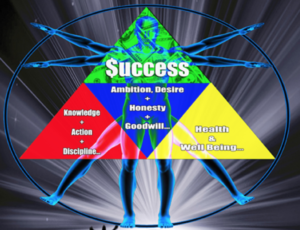If you’re a renter, chances are you’d rather not be. Rent is skyrocketing across the country, along with home prices, forcing many consumers in less-than-ideal financial situations to consider buying sooner rather than later.
It’s absolutely possible to buy a home on a lower income, but chances are you’ll struggle to save for a 20% down payment – especially if you live in a hot market where housing values are rising quickly. Most experts will advise anyone in this situation to consider an FHA mortgage over a conventional one.
That can be good advice, but FHA loans come with their own set of drawbacks compared to conventional loans. Like many financial tools aimed at low-income consumers, the difference between helpful and harmful is a thin line when it comes to an FHA mortgage.
Read ahead for everything you need to know about the difference between FHA and conventional mortgages, and how to choose between the two.
What is an FHA Loan and a Conventional Loan?
An FHA loan is a mortgage insured by the Federal Housing Administration from the U.S. Department of Housing and Urban Development. Currently, the FHA is responsible for almost eight million mortgages across the country.
The FHA doesn’t give out loans directly. Instead they back loans made by FHA-approved lenders. If for some reason the borrower defaults on the loan, the FHA will repay the lender for their loss.
Because the FHA is less stringent about approving borrowers, people who choose FHA loans tend to have lower incomes and credit scores. Without the FHA program, many prospective homeowners simply couldn’t qualify for a mortgage.
As part of being approved for an FHA loan, borrowers are usually expected to take financial literacy classes. These classes can be taken online or in-person, and are often full of practical tips to help people improve their finances and become good borrowers.
A conforming or conventional loan is the name given to a loan that isn’t sponsored by the FHA, VA, USDA or other type of government program. It can also be called a non-government sponsored entity or non-GSE loan.
Credit History
One of the main reasons why people choose an FHA loan over a conforming or conventional loan is because they don’t have a solid credit history or a high enough credit score.
To qualify for an FHA loan with a 3.5% down payment, you only need a credit score of 580 or higher. If you have a score between 500 and 579, you’ll have to put down 10% in order to be approved.
Conventional loans are much more stringent. The minimum credit score for most conventional loans is 620, though you’ll pay lower interest rates the closer your credit score is to perfect. According to loan processor company Ellie Mae, in 2017 the average credit score for FHA loans was 686, while the average for conventional loans was 752.
Mortgage advisor Casey Fleming, author of “The Loan Guide: How to Get the Best Possible Mortgage” said some credit events, like bankruptcies, foreclosures or short-sales can also disqualify you from a conventional mortgage. However, you can be approved for an FHA loan even with a mark like that on your credit history.
PMI and MIP
Whether you choose a conventional or FHA loan, you’ll have to pay a monthly or annual insurance fee if you put less than 20% down. On a conventional loan, that fee is known as Private Mortgage Insurance (PMI). An annual PMI fee costs between .3% and 1% of the total mortgage, and can be added to your monthly mortgage bill or paid once a year.
MIP or Mortgage Insurance Premium is what the FHA adds to your loan every month to help pay for the insurance that covers the lender in case you default. The MIP varies based on your loan amount, term length and down payment. For loans longer than 15 years, the MIP ranges between .8% and 1.05% of the total mortgage. Loans less than 15 years have an MIP between .45% and .95%.
Borrowers who choose an FHA loan also have to pay a lump sum fee at closing, costing 1.75% of the total loan. This fee can be financed as part of the loan if you can’t afford to pay it upfront. On a $200,000 mortgage, this would cost an extra $3,500. That’s on top of the normal closing costs than every borrower pays.
“Because of these extra fees, the long-term cost [of an FHA loan] is higher than a conforming loan,” Fleming said.
Another drawback to FHA loans with less than 20% down is that the borrower is stuck with MIP unless they sell the house or refinance the loan. It used to be that MIP fell off once the borrower had enough equity, but now it’s permanent. You can’t refinance your mortgage directly with the FHA – you’ll have to go through a conventional lender.
Unlike MIP, PMI can fall off the loan automatically without refinancing once you reach 22% equity in the home. However, this depends on the type of loan you get. Many conventional loans also don’t allow PMI to come off automatically. You may have to request it in writing or refinance the loan entirely.
Down Payments
For years, the best way to put less money down was to choose an FHA loan because of the 3.5% down payment option. Now conventional loans allow borrowers to put down as little as 3%. This undercuts one of the main reasons why people would choose an FHA loan over a conventional loan in the first place.
Having said that, you should almost always put down the largest sum you can reasonably afford. The more you put down, the lower your monthly payment and the less interest you’ll pay overall.
Debt-to-Income Ratio
A top factor that lenders look for when evaluating a borrower is their debt-to-income ratio, or how much of their monthly income goes toward debt payments. The lower your DTI, the more likely you’ll qualify for a mortgage and get a good interest rate.
You can have a DTI of up to 43% and still qualify for a conventional mortgage. FHA loans will approve borrowers with DTIs up to 50% or sometimes higher. This small difference is important for borrowers who have high student loans, car loans and other types of outstanding debt.
How to Choose
Interest rates are lower with an FHA loan, though the MIP will often counteract those savings.Because FHA loans will cost you more money in the long run, only people who truly can’t qualify for a conventional mortgage should choose the FHA.
If you do choose an FHA loan, consider refinancing once your credit score has improved, you have more than 20% equity in the home and your DTI is lower than 43%. You’ll pay some money upfront to refinance, but you’ll save in the long run by having a conventional loan.
Even if you’re completely certain you won’t qualify for a conventional mortgage, talk to your lender about your options and financial situation. They’ll be able to steer you in the right direction after asking about your debt, income, credit score, work history and other factors.
About The Author

- Robert Louis Annenberg Is a 40 year seasoned property owner, manager, investor, builder/developer and business man who is also an author of five published books to date (Amazon.com) and the chief editor of LifeQuestJournal.com. He can be reached at: Info@RobertAnnenberg.com and (201) 289-2500.
Latest entries
 #3 The Annenberg ReportOctober 2, 2020A Few More Interesting Facts About Money I Think You Should Know…
#3 The Annenberg ReportOctober 2, 2020A Few More Interesting Facts About Money I Think You Should Know… #3 The Annenberg ReportOctober 1, 2020I was a Degenerate…What’s Your Excuse?
#3 The Annenberg ReportOctober 1, 2020I was a Degenerate…What’s Your Excuse? #3 The Annenberg ReportSeptember 23, 2020The Facts of Money…
#3 The Annenberg ReportSeptember 23, 2020The Facts of Money… #4 Real EstateJuly 11, 2020Cipriani Investments Sues Over Alleged Home Flipping Scheme
#4 Real EstateJuly 11, 2020Cipriani Investments Sues Over Alleged Home Flipping Scheme





